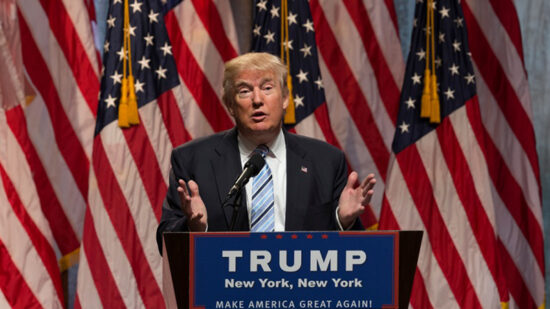Most high-frequency indicators point to a strong revival of economic activity in India.
2020 saw the highest amount of foreign financial investment in the last eight years, at $23bn (£16.9bn, €19bn).
We believe this economic rebound is set to remain well into 2021 reinforcing the investment case for India, writes Ramesh Mantri, adviser to the Ashoka India Equity Investment Trust.
In December, S&P Global Ratings revised India’s GDP growth citing faster than expected recovery. For FY22, S&P projected growth to rebound in double digits.
Worthy of note is that the faster than expected recovery comes despite a fairly moderate fiscal stimulus by the Indian government compared to most other nations.
Visibility of a practical Indian solution
While the early announcement of vaccines last year likely heralded the beginning of the end of this pandemic; for developing economies like India, the cost, storage and logistical requirements of early vaccines rendered them practically unfeasible for nationwide deployment.
However, the recent Oxford-AstraZeneca vaccine approval by UK authorities is a crucial development for India given this vaccine presents a pragmatic solution for mass inoculation in the country.
The vaccines are expected to be sold at cost price of $3 to $4 per dose in perpetuity and can be stored at two to eight degrees celsius.
This has been approved in India as we write, and paves the way for Serum Institute of India (SII) – the world’s biggest vaccine manufacturing company – to start producing for mass inoculation.
India’s pharma industry, which has almost 60% of global vaccine manufacturing capacity, is expected to play a pivotal role in the world’s fight against the pandemic.
“It’s great to see India’s leadership in scientific innovation and vaccine manufacturing capability as the world works to end the covid-19 pandemic,” wrote Bill Gates, co-chair of the Bill & Melinda Gates Foundation.
A strategic shift In India’s industrial policy
In order to develop a vibrant, flourishing manufacturing sector, any country needs four ingredients – low cost and skilled human resources, economic and political stability, quality infrastructure and a large captive domestic market.
India ranks highly on three out of four with government increasingly accelerating investments in improving the infrastructure.
There are concerted efforts underway including expanding highway networks, railway infrastructure, dedicated freight corridors and airport privatisation to improve efficiencies.
India has forged ahead boldly with the aim of becoming a global manufacturing hub.
Prime Minister Modi’s government unveiled Production Linked Incentives (PLI) schemes in 2020.
Totalling $27bn in direct incentives thus far, this perhaps marks a strategic shift in the country’s approach towards its industrial policy.
While earlier policies tended to spread incentives thinly across industries, PLI schemes bring about two crucial changes in policy structures.
Firstly, instead of adopting a spray and pray approach, there is a very clear focus on building few select domestic champions in each industry.
Secondly, the incentives are only applicable on incremental capex and production and not on the existing stock of production.
We believe these schemes will be highly influential in 2021.
Global supply chain vulnerability
So far, there have been two rounds of policy incentives announced.
The first aimed at creating global manufacturing hubs in mobile manufacturing, Pharma APIs and medical devices.
The initiative was a big success, particularly in mobile phone manufacturing, with global leaders such as Samsung and Apple, among others, shifting manufacturing supply chains to India.
India is now potentially emerging as the second largest hub for smartphone manufacturing with $100bn of cumulative exports targeted over the next five years.
On the back of this success, the policy was subsequently expanded to other sectors including automotive, pharmaceuticals, consumer durables, food processing and telecom equipment.
The pandemic exposed the vulnerability of global supply chains and an over dependence on China.
Governments and businesses across the world have been vocally looking for alternatives and India has emerged as an attractive destination.
Geopolitical developments and anti-China sentiments have further fuelled this shift. Infact, Japan is providing financial incentives to Japanese businesses to shift manufacturing bases from China.
Industries such as pharmaceuticals and specialty chemicals manufacturing in India were already gaining global market share and are expected to witness further acceleration due to these shifts.
Important cuts
These policy initiatives and anti-China tailwinds have been supported by tax reforms as well as other structural reforms in labour markets.
In 2019, India slashed effective corporate tax rates from 35% to 25%.
For new manufacturing units, the tax rate was further reduced to 17%, making it one of the lowest tax rates among competing markets.
India also pushed through landmark labour reforms untangling a complex set of restrictive laws, many of which were written in the pre-independence era in early 1900s.
Labour reforms will help reduce compliance burdens on existing and new companies, improve ease of doing business and removes several bottlenecks that hitherto hindered scaling up of businesses.
These developments indicate green shoots of a revival in domestic manufacturing and potentially mark a beginning of India’s rise as a manufacturing powerhouse.
This article was written for International Adviser by Ramesh Mantri, adviser to the Ashoka India Equity Investment Trust.








